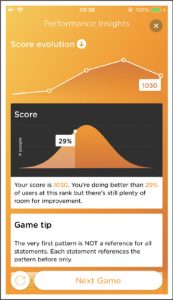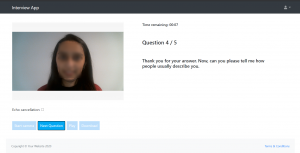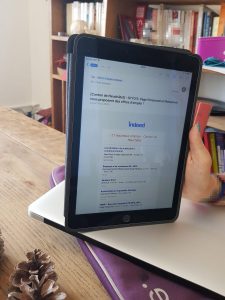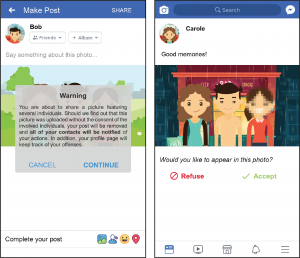Behavior-Change Technology and Physical Activity (AGON)
PhD students: Gabriela Villalobos-Zúñiga (leader), Alessandro Silacci.
UNIL Collaborators: Marc-Olivier Boldi.
External collaborators: Maurizio Caon (School of Management, Fribourg)
The main objective of this project is to study human motivation through the lens of Self-Determination theory. We aim at developing design guidelines to inform the development of apps and services aiming at supporting users towards a healthier lifestyle. We will conduct several experiments to measure the effectiveness of a diverse range of technological interventions in increasing physical activity.
See the poster we presented at the 7th International Self-Determination Theory Conference 2019.
- G. Villalobos-Zuñiga, M. Cherubini. 2020. Apps That Motivate: a Taxonomy of App Features Based on Self-Determination Theory. International Journal of Human-Computer Studies (IJHCS). Volume 140, August 2020, 102449. DOI: 10.1016/j.ijhcs.2020.102449
- M. Cherubini, G. Villalobos-Zuñiga, M.-O. Boldi, and R. Bonazzi. 2020. The Unexpected Downside of Paying or Sending Messages to People to Make Them Walk: Comparing Tangible Rewards and Motivational Messages to Improve Physical Activity. ACM Trans. Comput.-Hum. Interact (ToCHI). 27, 2, Article 8 (March 2020), 44 pages. DOI: 10.1145/3365665
See the promotional video.
Behavior-Change Technology to Support Job Seekers
Project Leader: Pooja Rao
UNIL collaborators: Rafael Lalive, Hélène Benghalem.
External collaborators: Michele Pellizzari (UNIGE), Matthias Kliegel (UNIGE), Tawanna Dillahunt (U. Michigan), Dinesh Babu Jayagopi (IIIT Bangalore)
This research aims at supporting job seekers through the unemployment spell. We are designing and testing technological interventions in the following areas: a. job search; b. interview training; c. self-presentation. We are building tools using advanced techniques from the fields of Artificial Intelligence, Natural Language Processing and Computer Vision to help job seekers enhance their interview related skills. The goal of these interventions is to increase the sense of self-efficacy of the job-seekers. The interventions build on Self-Determination Theory and Theory of Planned Behaviour.
Publication in Preparation….
Life Changing Events
Project Leader: Mauro Cherubini.
UNIL collaborators: James Tyler
External collaborators: Wendy Moncour (University of Dundee, UK)
Life-changing events (or LCEs) can alter a person’s status quo and threaten well-being. Previous research investigated distinct LCEs, where participants already used technology routinely. This paper reports the results of two field studies through which we compared supports people refer to when experiencing different LCEs. Together with users of technology, our sampling included participants who specifically did not refer to online services and tools to seek help during their LCE. We found that popular services people refer to are inattentive to the needs of people experiencing an LCE as they do not allow forms of progressive engagement and disclosure within the service. We also found that popular services are imprudent as their design might expose users experiencing an LCE to more sources of stress. Finally, we found that these services are inapt to support these users as they do not provide direct forms of interactions with experts.
- M. Cherubini, L. Reut, J. Tyler and M. Ortlieb. Inattentive, Imprudent and Inapt: Discovering Inadequacies of ICT During Life-Changing Events Through the Lens of Non-Users. Behaviour & Information Technology (BIT). Accepted in May 2020, in press.
Project Checksum 
Project Leader: Kévin Huguenin.
UNIL collaborators: Bertil Chapuis.
External collaborators: Mathias Humbert (Armasuisse), Igor Bilogrevic (Google).
In often cases software companies or independent developers distribute the binary files of their software using sources different than the original website. This creates a risk of making the original binaries corrupted, making the computer used to download them corrupt.
For instance, versions of popular programs (e.g., BitTorrent clients) corrupted and disseminated by hackers include malware that turns the victims’ computer into so-called bots, injects spyware and ads or even mine Bitcoins, thus generating profit for the hackers.
Trying to reduce this risk, developers use a cryptographic check-sum or hash, corresponding to the binary file of their program. The functions used to generate such check-sums are built in a way that it is not tractable to generate another file with the exact same check-sum. Therefore, if the binary file of a program is corrupted, the corresponding hash will be different from that of the original file, thus allowing the users who download it to detect the corruption and cancel its installation.
- B. Chapuis, O. Omolola, M. Cherubini, M. Humbert, K. Huguenin. An Empirical Study of the Use of Integrity Verification Mechanisms for Web Subresources. In Proc. of the The Web Conference (WWW’20), Taipei, Taiwan, Apr 2020. DOI:10.1145/3366423.3380092
- M. Cherubini, A. Meylan, B. Chapuis, M. Humbert, I. Bilogrevic, K. Huguenin (2018). Towards Usable Checksums: Automating the Integrity Verification of Web Downloads for the Masses. In Proc. of the 25th ACM Conference on Computer and Communications Security (CCS’18), Toronto, ON, Canada, Oct 2018. DOI: 10.1145/3243734.3243746
Persuasive Agencies

Project Leader: James Tyler.
For people experiencing health crises, there are often long periods where they need to take care of themselves between consultations. For certain groups, maintaining healthy routines can be crucial to their recovery or stability and maybe highly challenging. Advances in machine learning, artificial intelligence, and low-cost components offer new possibilities for adaptive interventions in healthcare.
Solutions could adapt to fluctuations in the individuals’ energy or mood and alert caregivers to problems far earlier than current strategies. The form and interface for such devices or services is relatively underdeveloped. Our research is targeting the impacts of personalisation, co-design or embodiment – especially on persistent utilisation and efficacy.
Multiparty Privacy Conflicts (MPC)
Project Leaders: Kavous Salehzadeh Niksirat, Mauro Cherubini, and Kévin Huguenin.
UNIL Collaborators: Marc-Olivier Boldi.
External Collaborators: Jose Such (King’s College London).

Internet users share ever-increasingly multimedia content online (i.e. photos and videos). Most of the shared contents are co-owned data depicting more than one user (e.g., group photos). Sharing co-owned multimedia contents without getting consent causes Multiparty Privacy Conflicts (MPCs) and it might have severe privacy implications on the users’ life.
In this project, we aim at the design and evaluation of novel technological interventions to deter users from sharing multimedia content of other users without their consent. In particular, we study how persuasive technologies can influence users towards more considerate and mindful behavior. We explore the use of different persuasive approaches such as reward, punishment, and empathy to discourage users from sharing online.
Through a user-centric approach, we design usable privacy-preserving technologies. We also use different experimental approaches such as user studies and longitudinal intervention studies to understand users’ preferences and the effectiveness of the designed strategies in everyday life where real MPC incidences might occur.
Publications in preparation …
Body Image and Body  Awareness (OCEAN)
Awareness (OCEAN)
Project Leaders: Arianna Boldi (University of Torino)
UNIL Collaborators: Mauro Cherubini, Kévin Huguenin
External Collaborators: Amon Rapp (University of Torino)
The main objective of this project is to understand whether the use of wearables produces changes in the individuals’ body image and perception. As there is a growing debate in self-tracking literature about the possibility that body representations may be affected by activity tracker use, the study will empirically investigate this point by focusing on two constructs: body image and body awareness. We will apply a mixed-method design approach: first, participants will be asked to complete a set of standardized questionnaires before and after a 3-month period of wearable use; then, in-depth interviews will be conducted on a sub-sample of participants to better understand the underlying dynamics.

